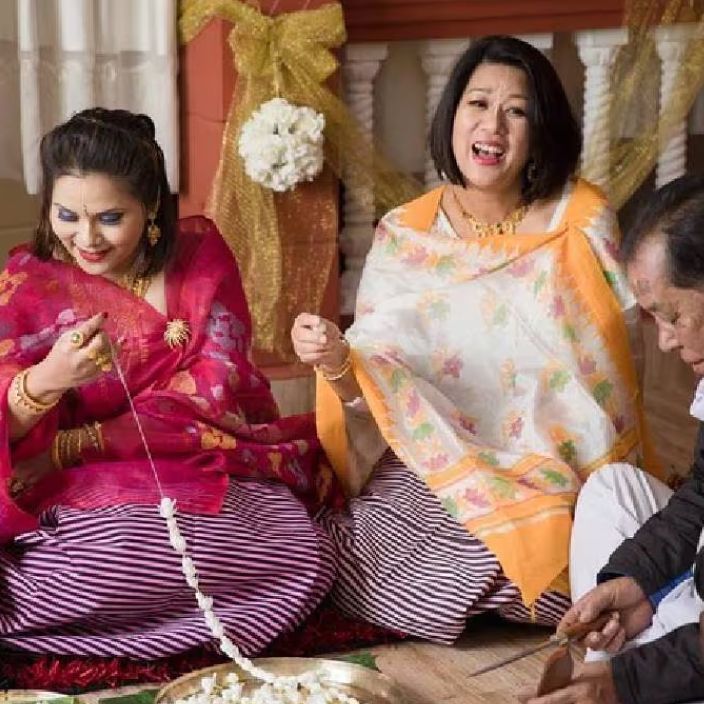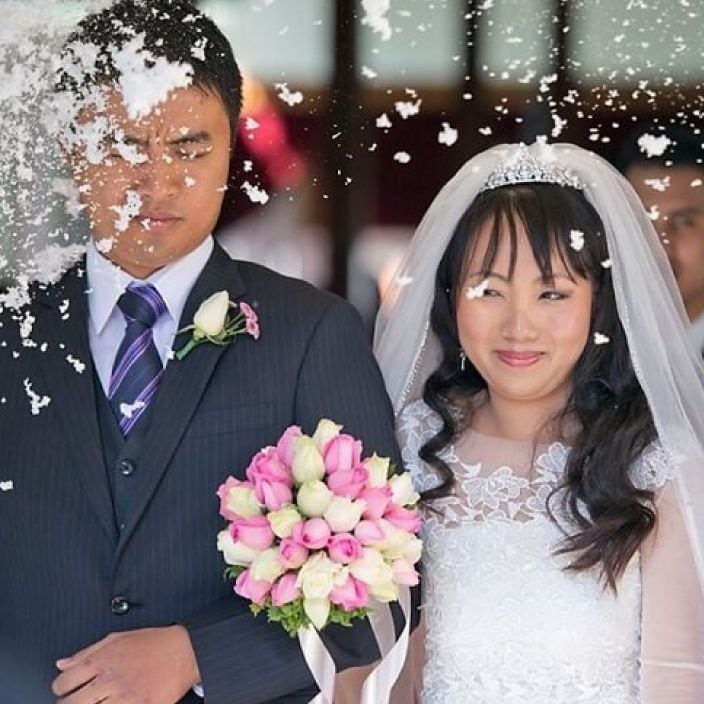For best prices and early deliveries, WhatsApp us at. 918488070070
Mizoram
Mizoram, located in the lush hills of northeastern India, is a region rich in culture and tradition. The Mizo people take great pride in their heritage, and this is evident in their wedding customs, which are both meaningful and community-focused. Mizo weddings are known for their simplicity and emphasis on family. In fact, the process itself kicks off with a formal proposal, where elders from both families gather to discuss the details and ensure that traditional practices are followed. It is less about grandeur and more about respect and understanding between the families. The wedding blends Christian rituals with traditional Mizo customs, reflecting the strong Christian influence in the region. It is marked by a sense of togetherness, with the community playing an active role in the celebrations. After the vows are exchanged, a feast is shared, where everyone comes together to celebrate the couple's new life. In Mizoram, weddings are not just about the couple but about strengthening the bonds within the community, highlighting the balance of tradition and modern influences that shape life in the region.
Tracing the Traditions
The journey begins with a traditional gathering where the groom's family visits the bride's residence to propose marriage. This meeting isn't just a formal request; it's a heartfelt gesture, often filled with laughter, stories, and a shared meal that symbolises the bond between the two families.
This is also when the bride price discussion takes place, and both families settle on a price which the bridegroom is obligated to pay. Settlement of this price translates to the acceptance of the proposal, leading to the next step, where the community plays a central role, referred to as Zawlbuk. Historically, the Zawlbuk was a men's dormitory where boys learned the ways of Mizo life, but in the context of marriage, it represents the coming together of the community to bless the union.
Signifying the mutual respect and equality that define Mizo marriages, the ceremonial act of fetching the bride from her family’s home. Over time, Christian influences have added a new layer to this tradition, with church weddings becoming increasingly common. It takes place before the Zawlbuk, the main wedding ceremony, where the union between the bride and groom is solemnised. It is the culmination of all pre-wedding rituals and is typically conducted with much festivity and joy. During Zawlbuk, the bride and groom exchange vows and are blessed by their elders, solidifying their commitment to each other.
One of the most cherished aspects of a Mizo wedding is the Buh-faak, a rice-feeding ceremony where the newlyweds feed each other, symbolising their promise to care for one another. This intimate act, which was once a private affair, is now often shared with guests, reflecting the evolving nature of Mizo weddings, where tradition meets the warmth of modern celebrations. The symbolic elements of the Mizo wedding also include Zu Thlan, Tlangau, and other age-old ceremonies like Mangkhawn, Mangkolh, Val Upa, and Inpuichhung contribute to the cultural significance of Mizo weddings. Additionally, during feasts and celebratory moments, Pum, Tlangau, and other traditional offerings add a special element of shared heritage.
Wedding Attire
For the bride, the Puan – a traditional Mizo wrap-around skirt – is customary. This elegant garment, often crafted from handwoven fabric in striking patterns and colours, is paired with a Kawrchei, a blouse adorned with intricate embroidery. The attire is complemented by a Mizo shawl or Puanchei, draped over the shoulders, adding an extra layer of grace and tradition. Additionally, Ngotekherh, a traditional Mizo textile often used in ceremonial attire, is sometimes incorporated into the bride's outfit to represent cultural identity and heritage.
Although, over time, Mizo wedding attire has evolved. Modern brides now prefer a white gown owing to the church wedding, sometimes blending it with traditional Puans to honour their heritage.
Jewellery is essential in a Mizo wedding, reflecting both heritage and beauty. Brides typically wear silver ornaments, including necklaces, earrings, and headpieces. The Tangkathi, a traditional Mizo necklace, is particularly significant, often made from silver coins and beads and worn as a symbol of wealth and status.
Grooms, on the other hand, don a Puan, usually in darker shades, paired with a traditional jacket. They also wear a Mizo shawl, adding a ceremonial touch. Their attire is often completed with a distinctive headpiece, known as Kawibai, crafted from traditional materials and adding a regal flair to the groom's ensemble.
Grooms, too, are seen pairing traditional jackets with Western-style trousers. Yet, no matter how fashion changes, the essence of Mizo wedding attire remains – a beautiful blend of tradition, culture, and identity.
Traditional Cuisine
At the heart of the celebration is the savoury Bai, a hearty stew made from fresh bamboo shoots, meat, and local herbs. This dish is a symbol of unity, as families gather around to share its rich flavours. Sawhchiar is rice cooked with meat. Another centerpiece is Vawksa Rep, a tender smoked pork dish, slow-cooked to perfection with a blend of spices that reflect the region's earthy tastes.
Misa Mach Poora, a deliciously spiced grilled fish, adds a touch of elegance to the spread, while Koat Pitha, sweet rice cakes stuffed with jaggery and coconut, offer a touch of sweetness to balance the savoury dishes. Additionally, traditional options like Arsa Buhchiar, Chhangban, and Zu Beer are served to complete the meal.
Every dish is prepared with love and care, ensuring that the flavours of Mizoram's rich culinary traditions enhance the joy of the occasion.
Cultural Decor
As you step into a Mizoram wedding venue, you're greeted by a mesmerising tapestry of colours and craftsmanship. Traditional Mizo décor transforms the space into a living canvas of heritage.
The venue often bursts with intricate bamboo and cane structures, reflecting the Mizo’s deep-rooted connection to nature.
Brightly woven tapestries and traditional Mizo rugs add a touch of artistry, depicting the rich folklore and legends of the land. Handcrafted floral arrangements featuring the region's exotic blooms infuse the air with fragrance and vibrancy.
These are not mere decorations; they are stories and symbols woven into the fabric of celebration.


